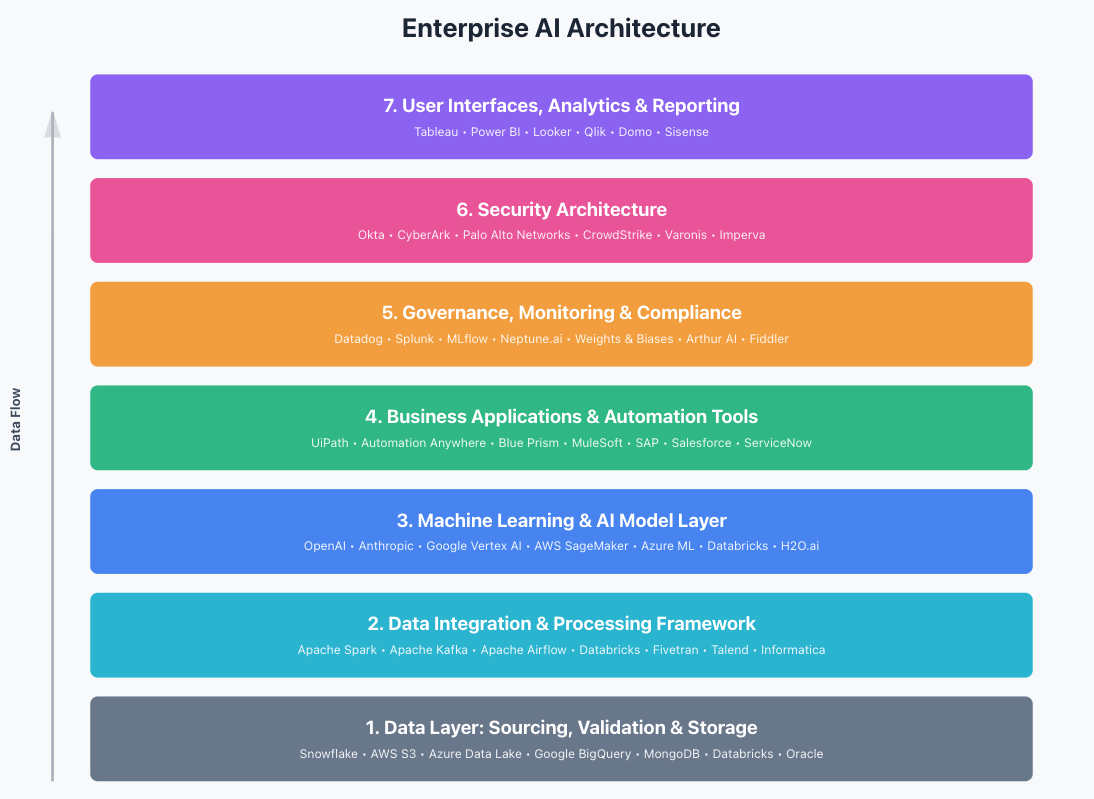Enterprise AI Architecture Example
AI layers aren’t just a technical concept - they’re the foundation for sustainable, enterprise-wide AI adoption.
We'll help you get them right, so you can unlock efficiency, scalability, and governance without sacrificing speed.
Building the Foundation for Scalable AI
Effective enterprise AI isn’t just about deploying a model - it’s about creating a structured architecture that can scale, integrate, and stay under control. At the heart of this architecture are AI layers: distinct components that work together to turn raw data and compute into AI-powered applications embedded in your business workflows.
Why AI Layers Matter?
Without a layered approach, AI adoption quickly becomes chaotic. Teams spin up isolated tools, security gaps emerge, and costs spiral.
A well-designed AI architecture solves this by:
- Centralising control – consistent governance, compliance, and security across all AI initiatives.
- Standardising integration – connecting fragmented systems so models can access the data they need.
- Scaling efficiently – adding new AI capabilities without breaking what already works.
What Are AI Layers?
Think of AI layers as building blocks in your enterprise tech stack.
Each layer has a specific role:
- Layer 1 (Foundation): Data sourcing, validation, and storage
- Layer 2: Data integration and processing pipelines
- Layer 3: Machine learning models and AI infrastructure
- Layer 4: Business applications and automation
- Layer 5: Governance, monitoring, and compliance
- Layer 6: Security architecture
- Layer 7 (Top): User interfaces and reporting
The arrow on the left shows how data and information flow upward through the layers, from raw data collection through to actionable insights presented to users. This represents the typical enterprise AI stack where each layer depends on the ones below it.
Organising AI into layers makes it easier to control, grow, and connect - so every department benefits without creating silos.

Click Image for full-size version including associated roles